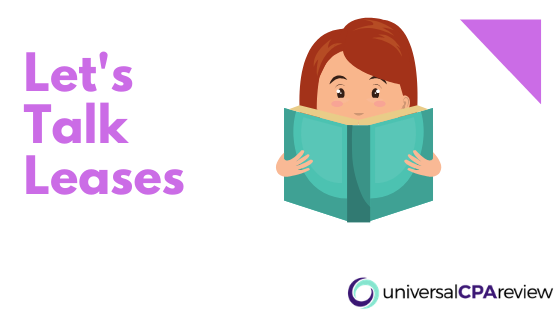Adoption of ASC 842
The adoption date for ASC 842, the updated leasing standard, was January 1, 2019 for calendar year public companies. The standard replaces the old leasing standard, ASC 840. As the standard was recently implemented, the new rules have officially been incorporated into the FAR CPA section of exam. What does this mean for potential candidates as they get ready to test? Fortunately, you don’t need to know the ins and outs of the new standard, but you will need to know the basic facts.
Essentially the standard was updated in order to provide more transparency for investors regarding a company’s lease assets and liabilities, and overall true financial position. The first (and perhaps most important) thing CPA candidates should understand is that all leases are now reported on the lessee’s balance sheet. With regards to the old standard, only financing leases were reported on the balance sheet, while lease payments relating to an operating lease were expensed on a straight-line basis over the life of the lease.

Breaking Down Right-of-Use Assets
The new standard requires companies to record a right-of use (ROU) asset and a lease liability, unless the lease is considered a short-term lease. A short-term lease is a lease with a life less than 12 months. The asset and liability should be measured at the present value of all lease payments, using the implicit discount rate in the lease. If not determinable, use the lessee’s incremental borrowing rate. For operating leases, a single lease expense that includes interest and amortization expense is recorded on the income statement. Lease costs (such as property taxes and insurance) are included in the lease payments, whereas under the old standard they were excluded.
The standard requires additional qualitative and quantitative lease disclosure requirements affecting both the lessee and lessor. The disclosure requirements are more extensive and stricter compared to the old standard and may require companies to implement new systems and controls to effectively meet the requirements. Also, as the new standard requires all leases to be appropriately captured and categorized, many companies implemented new software t:o adequately track them, generating the need for additional controls.
Bottom Line
Lastly, the definition as to what qualifies as a lease is more stringent under the new standard. According to the old standard, to be considered a lease the company had to determine if it had the “right to obtain substantially all of the economic benefits” from the asset. Under the new standard, the company must also determine if they have the “right to direct the use of the asset”.
The new leasing standard does not just apply to new leases, but also applies to existing leases. As you begin studying the new standard in order to adequately prepare for the FAR CPA section, focus more on the big picture, and less on the minute details. Summarized nicely, the new standard requires all leases (less short-term) to be reported on the balance sheet, expands the disclosures needed in the financial statements, and slightly changes the requirements as to what qualifies as a lease.
Universal CPA Review offers high-quality, cost effective study resources that will increase your changes of passing the CPA exam on your first try.

